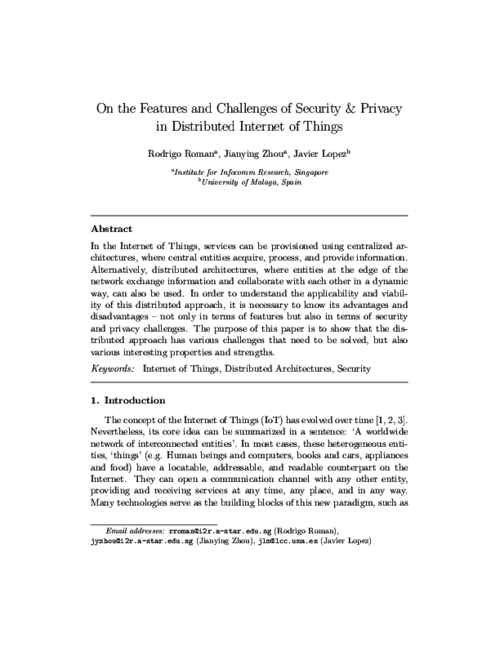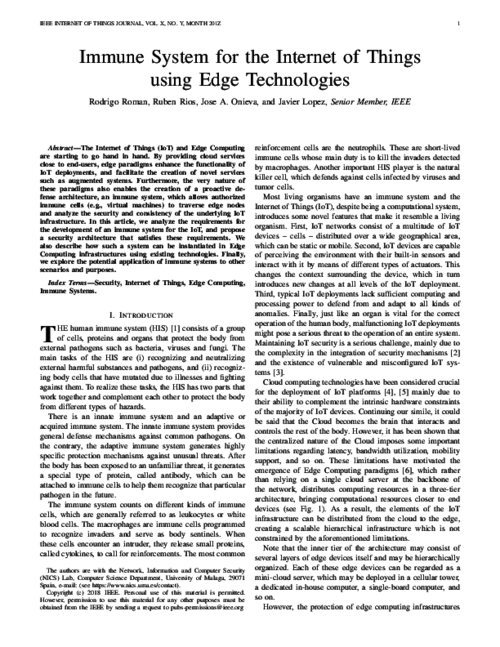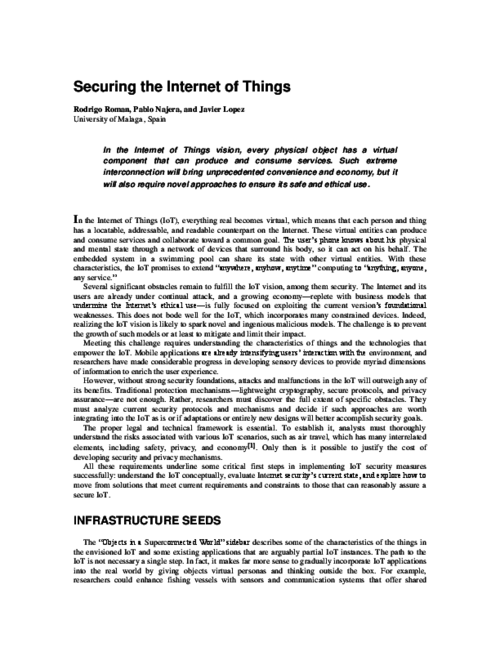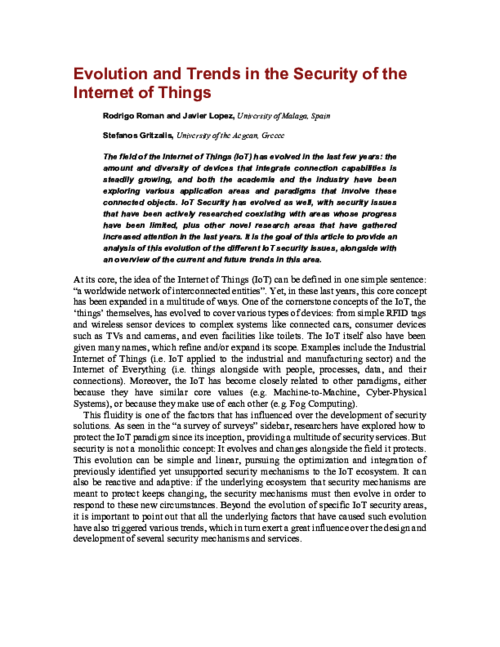 ] Title Type Year
] Title Type Year Computer Networks, vol. 57, Elsevier, pp. 2266–2279, July 2013. DOI
Abstract
In the Internet of Things, services can be provisioned using centralized architectures, where central entities acquire, process, and provide information. Alternatively, distributed architectures, where entities at the edge of the network exchange information and collaborate with each other in a dynamic way, can also be used. In order to understand the applicability and viability of this distributed approach, it is necessary to know its advantages and disadvantages – not only in terms of features but also in terms of security and privacy challenges. The purpose of this paper is to show that the distributed approach has various challenges that need to be solved, but also various interesting properties and strengths.

IEEE Internet of Things Journal, vol. 6, issue 3, IEEE Computer Society, pp. 4774-4781, 06/2019. DOI
Abstract
The Internet of Things (IoT) and Edge Computing are starting to go hand in hand. By providing cloud services close to end-users, edge paradigms enhance the functionality of IoT deployments, and facilitate the creation of novel services such as augmented systems. Furthermore, the very nature of these paradigms also enables the creation of a proactive defense architecture, an immune system, which allows authorized immune cells (e.g., virtual machines) to traverse edge nodes and analyze the security and consistency of the underlying IoT infrastructure. In this article, we analyze the requirements for the development of an immune system for the IoT, and propose a security architecture that satisfies these requirements. We also describe how such a system can be instantiated in Edge Computing infrastructures using existing technologies. Finally, we explore the potential application of immune systems to other scenarios and purposes.

IEEE Computer, vol. 51, issue 7, IEEE Computer Society, pp. 16-25, 07/2018. DOI
IEEE Computer, vol. 44, no. 9, IEEE, pp. 51 -58, Sept 2011. DOI
Abstract
This paper presents security of Internet of things. In the Internet of Things vision, every physical object has a virtual component that can produce and consume services Such extreme interconnection will bring unprecedented convenience and economy, but it will also require novel approaches to ensure its safe and ethical use. The Internet and its users are already under continual attack, and a growing economy-replete with business models that undermine the Internet’s ethical use-is fully focused on exploiting the current version’s foundational weaknesses.

